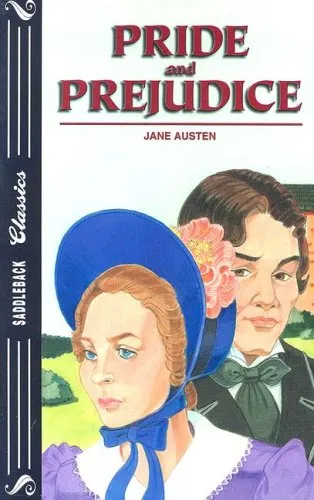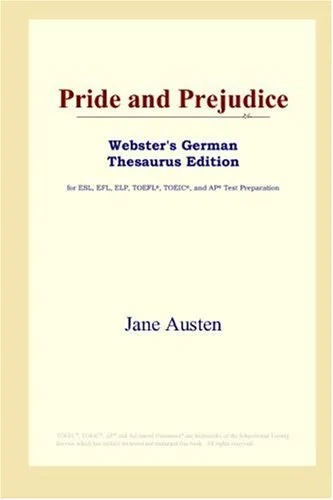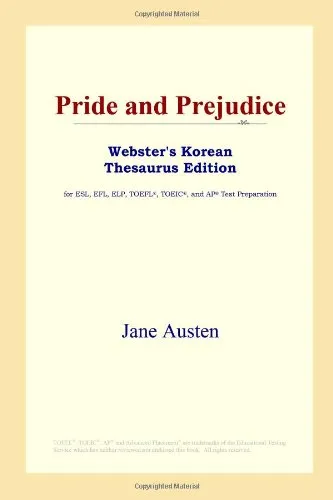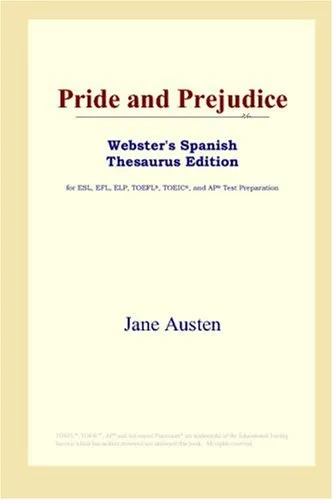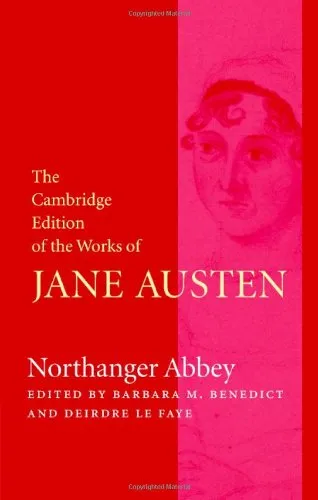Pride and Prejudice (The Cambridge Edition of the Works of Jane Austen)
4.3
Reviews from our users

You Can Ask your questions from this book's AI after Login
Each download or ask from book AI costs 2 points. To earn more free points, please visit the Points Guide Page and complete some valuable actions.Related Refrences:
Persian Summary
Introduction to Jane Austen's "Pride and Prejudice"
"Pride and Prejudice", authored by the esteemed Jane Austen, is a seminal work in English literature, first published in 1813. Its enduring popularity and relevance have solidified its place as a classic. The Cambridge Edition of "Pride and Prejudice" offers readers an authoritative text, enriched with scholarly annotations and insights that reveal the depth and context of this timeless novel.
Detailed Summary
Set in the Regency Era, "Pride and Prejudice" explores the complex social dynamics of 19th-century England, centering on the Bennet family. Mr. and Mrs. Bennet have five daughters and a pressing concern: securing advantageous marriages to ensure their futures. The novel spins around the spirited and quick-witted second daughter, Elizabeth Bennet, as she navigates love, mistaken impressions, and societal expectations.
The arrival of the wealthy and eligible Mr. Charles Bingley and his friend, Mr. Fitzwilliam Darcy, at the nearby Meryton estate sets the local hearts aflutter. Though Mr. Bingley's charming disposition quickly endears him to all, Mr. Darcy's aloofness lands him in public disfavor—especially with Elizabeth, who finds him proud and disagreeable.
As the story unfolds, Elizabeth encounters numerous challenges that engage her sense of morality and wit. Her evolving relationship with Mr. Darcy epitomizes the intertwining forces of pride and prejudice that both separate and unite them. Through a series of misunderstandings, revelations, and eventual self-awareness, Elizabeth and Darcy embark on a journey towards mutual respect and love.
Key Takeaways
- Social Critique: The novel offers a poignant critique of class-consciousness and the pursuit of marriage in the Regency era.
- Character Development: Austen’s characters are richly drawn and undergo significant personal growth, particularly Elizabeth and Darcy.
- Feminism and Independence: Through Elizabeth, Austen champions the notion of personal choice and the agency of women in a male-dominated society.
Famous Quotes from the Book
"It is a truth universally acknowledged, that a single man in possession of a good fortune, must be in want of a wife."
"I could easily forgive his pride, if he had not mortified mine."
"You have bewitched me, body and soul, and I love, I love, I love you."
Why This Book Matters
"Pride and Prejudice" continues to captivate readers due to its exploration of themes that remain relevant today. Jane Austen's keen observations of human behavior and societal tendencies provide a mirror through which we can still discern our own world. This book transcends its time, speaking to universal truths about love, integrity, and the folly of judging by first impressions.
Austen’s deft use of irony and social commentary not only entertains but also encourages introspection. Her nuanced portrayal of characters—who are as flawed as they are endearing—invites readers to reflect on the role of pride and prejudice in their own lives.
Furthermore, the intricate narrative woven by Austen highlights the transformative power of understanding and compromise in relationships, underlying the enduring significance of "Pride and Prejudice" in the literary canon. The Cambridge Edition captures these nuances with scholarly precision, making it an invaluable resource for enthusiasts and scholars alike.
Free Direct Download
You Can Download this book after Login
Accessing books through legal platforms and public libraries not only supports the rights of authors and publishers but also contributes to the sustainability of reading culture. Before downloading, please take a moment to consider these options.
Find this book on other platforms:
WorldCat helps you find books in libraries worldwide.
See ratings, reviews, and discussions on Goodreads.
Find and buy rare or used books on AbeBooks.
1526
بازدید4.3
امتیاز0
نظر98%
رضایتReviews:
4.3
Based on 0 users review
Questions & Answers
Ask questions about this book or help others by answering
No questions yet. Be the first to ask!


